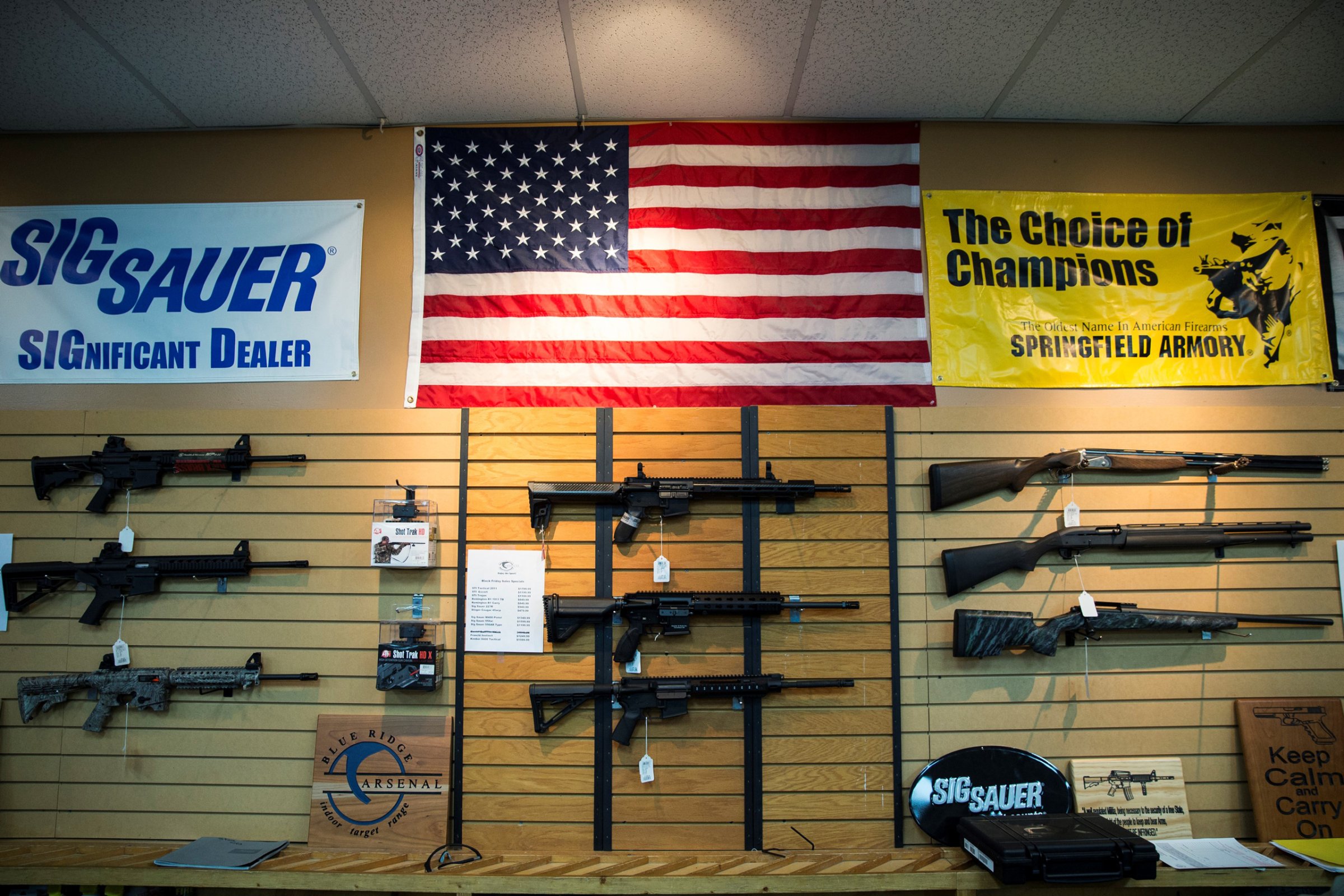
After the Orlando shooting, many Americans are questioning why assault-style weapons are commercially available in the United States.
“Assault weapon” is a political phrase, not a technical one. It refers broadly to rapid-firing semiautomatic weapons, appropriate to military use. While the phrase is a new one, the porousness between military and commercial gun markets is not. In fact, it’s one of the oldest features of America’s gun culture. Some of the most iconic, notorious guns in American civilian life were first envisioned by their manufacturers as weapons of war.
Oliver Winchester’s repeater rifle of 1866, celebrated as “the gun that won the west” in the hands of individual pioneers and gunslingers, was the assault rifle of its day. This multi-firing arm performed a “terrible work of death,” a witness recalled. Although Winchester sought all the customers he could, he first envisioned and marketed the repeater as a weapon for what he called the “romance of war,” and imagined that it would save lives on the battlefield. He wanted substantial U.S. military contracts.
When the Ordnance Department complained that the rifle used too much ammunition, and would surely “pass into oblivion,” as one colonel wrongly imagined, Winchester shifted his eggs to the civilian basket and sold it primarily as a sporting, hunting and self-defense arm for individual Americans.
In early 1900s, the company did the same with another gun. Toward the end of World War I it marketed to civilians the “riot gun” that the Germans had protested for the suffering it inflicted. This gun migrated from the trenches to the American streets. Company archives include correspondence that “demand, when properly worked up,” for this gun would lead to stronger sales. The riot gun was advertised as “indispensable for banks, watchmen,…prison guards, sentries, train hands, and home protection.” It was ideal for “shooting in the dark, where aim is uncertain.”
Around the same time, the Colt’s Company singlehandedly produced almost all the guns that made the roaring ‘20s roar: the Tommy Gun—often referred to as a machine gun, but actually a submachine gun. Colt’s manufactured 15,000 of these weapons in 1921 for Auto Ordnance, which held the patent. This famous “gangster weapon” was also originally “designed for purely a military weapon,” as Colt’s vice president Frank Nichols explained to Congress. Auto Ordnance intended to sell them in South America through a military contract. When that contract fell through, they sold the guns on the US civilian market, as the market of second if not last resort.
In the early 1990s Winchester developed a “black talon” ammunition for FBI and police use that was the bane of emergency room doctors because it ripped through human tissue with exceptional destruction. Although intended for law enforcement, it was marketed and sold to American civilians.
The AR-15 used in the Newtown shooting was developed in the mid-1900s as a military weapon, and the Orlando shooter used a .223 caliber Sig Sauer MCX semiautomatic rifle, imported from Switzerland and also developed for U.S. military special operations.
The permeable boundary between military and commercial firearms has a long history in our gun culture. But history also includes examples of the gun industry questioning its own sales and marketing decisions. When Congress deliberated the first comprehensive gun control legislation in 1934, Nichols conceded that he saw no reason why Tommy Guns should be sold to civilians, testifying, “unfortunately I think we can state correctly, [Auto Ordnance] was a bit careless in their methods of merchandising” the gun when they found their way to the commercial market. In 1934 Auto Ordnance entered into a gentlemen’s agreement with the Justice Department to take better care in the sale of the remaining submachine guns.
Some interesting recent developments that address the porous boundary between military and commercial weapons have not come from federal legislation but from dealers and the gun industry doing things voluntarily—after tragedies, consumer activism or the threat of civil liability lawsuits stimulated new awareness of the gun industry. For example, Walmart quietly and voluntarily decided to halt sales of assault rifles after a 2015 New Orleans mass shooting. They called the decision a “business,” not a “political” one. A Wisconsin gun store implemented a “members only” customer policy after they were sued for having sold firearms that shot two Milwaukee police officers. And in 1993, Winchester stopped selling its handgun version of black talon ammunition to the public, stating that “the controversy” over the ammunition “threatened the good name of Winchester.”
A ban on assault weapons might be impractical in the current political climate. And no single policy will end mass shootings, which are in turn only one part of a larger problem of gun violence. But there is also an historical tradition of the gun industry and dealers revising their own marketing practices. On occasions this happens not owing to federal legislation, but when consumer activism—or a tragedy like Orlando—recommends it.
More Must-Reads from TIME
- Inside Elon Musk’s War on Washington
- Meet the 2025 Women of the Year
- The Harsh Truth About Disability Inclusion
- Why Do More Young Adults Have Cancer?
- Colman Domingo Leads With Radical Love
- How to Get Better at Doing Things Alone
- Cecily Strong on Goober the Clown
- Column: The Rise of America’s Broligarchy
Contact us at letters@time.com